By Rick VanSickle
Icewine is Canada’s greatest vinous treasure, our gift to the wine world, so why is it going through such troubled waters these days?
Note: Also in this report, we have new wine reviews for Domaine Queylus, Malivoire, Henry of Pelham, Kacaba and Niagara wine highlights from the Feb. 6 Vintages release.
With the smallest harvest of icewine in the last 20 years about to begin, and ironically, amid some of the most favourable conditions for the sweet stuff in recent memory, it’s not the growers and wineries causing the fall from favour, it’s all of us — with a major assist from COVID-19.
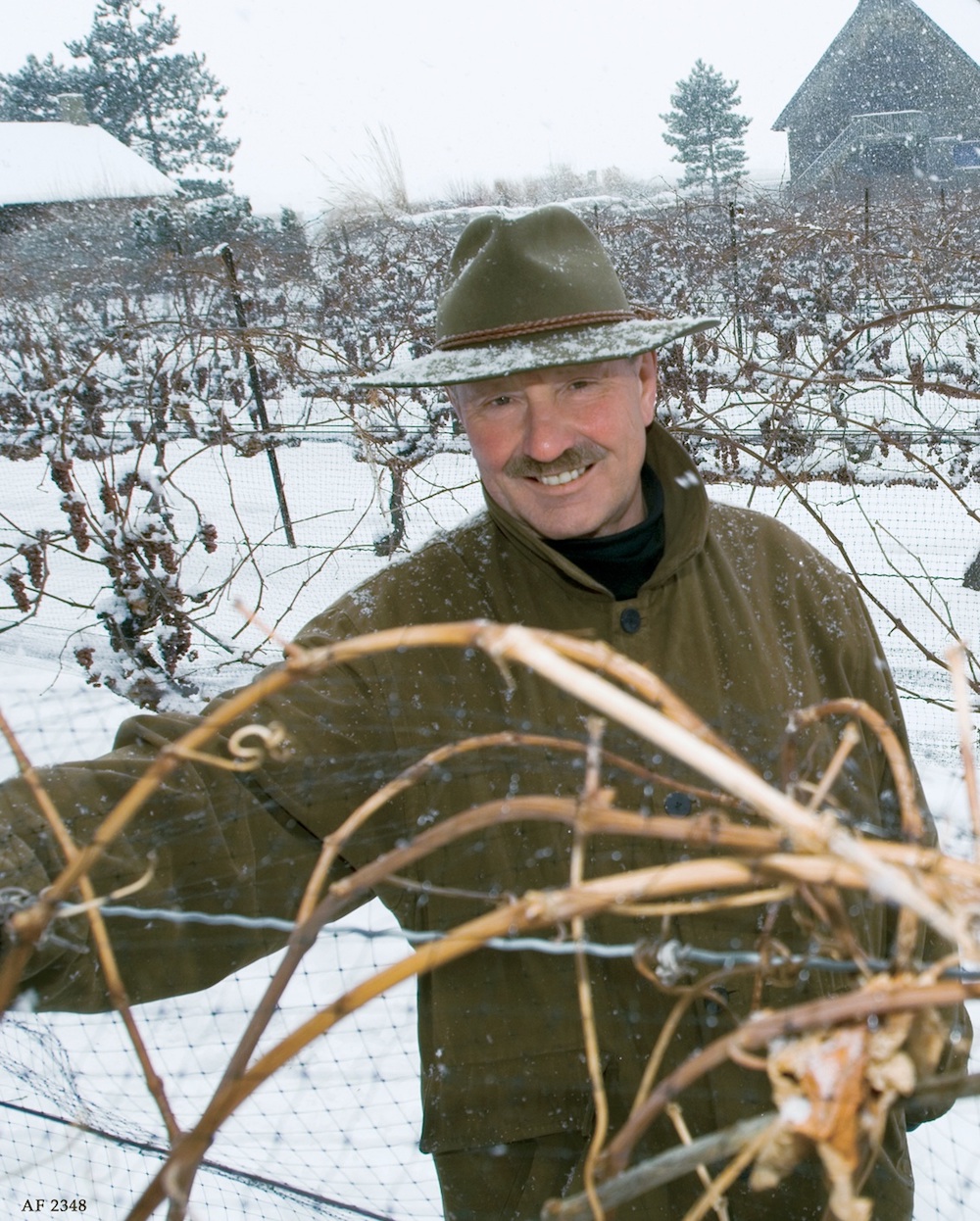
There is no question that icewine put Canada firmly on the world wine map. From the very first commercially produced icewine made by the late Karl Kaiser, above, and Donald Ziraldo at Inniskillin Winery in Niagara-on-the-Lake in 1984, the world fell in love with this luscious treat, renowned for its layers of tropical and citrus fruit flavours and aromas ranging from mango to peach to lemon to lychee.
Icewine is truly a natural wonder and extreme winemaking at its best with styles that range from unoaked to slightly oaked to sparkling and crafted from myriad grapes grown in Ontario and B.C.
“To Inniskillin goes the credit of creating the international market for Canadian icewine,” Tony Aspler, author of The Wine Atlas of Canada, famously wrote.
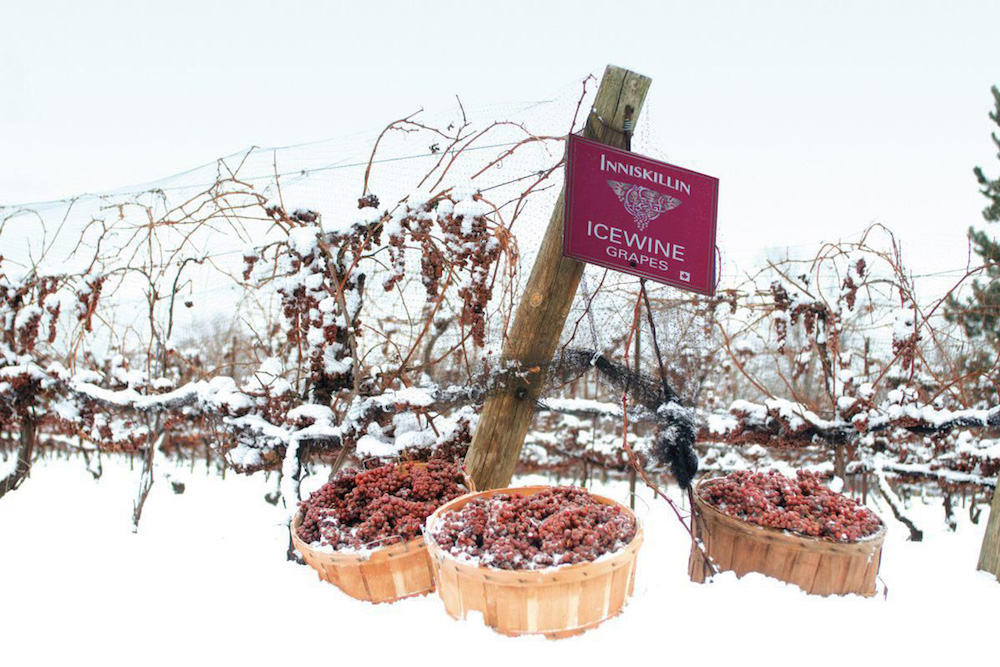
Once the extreme temperatures arrive, which is often in the dead of night, the harvest of naturally frozen clusters begins. The precious grapes are then pressed in the extreme cold to extract the exotic nectar. In this process, the water content in each grape, which is about 80%, remains frozen as ice crystals. These crystals will remain inside the grape during pressing, puncturing the skin for added flavours. The resulting juice is highly concentrated, textured and rich. Icewine yields are a mere 10-15% of an average table wine harvest. Slowly fermented over the coming months, this delicate nectar will eventually become icewine.
It’s no wonder a half bottle of icewine can cost $100 or more, putting it into a luxury category few people seem to be willing to venture. But beyond Canada’s borders, there has always been a thirst for this sweet treat. The U.S. is the biggest buyer of Canadian icewine, with the latest statistics showing over $7 million exported to that country in 2019. China is second at $5.9 million and South Korea third at $2 million. The U.S. surpassed China as the main purchaser of icewine in 2019; prior to that China was traditionally the biggest buyer, purchasing upwards of $11 million annually.
Statistics are not available for 2020 as of yet, but icewine producers are bracing for a significant drop in those numbers, thanks to COVID-19 and the lack of tourism, travel and decreased restaurant occupancy.
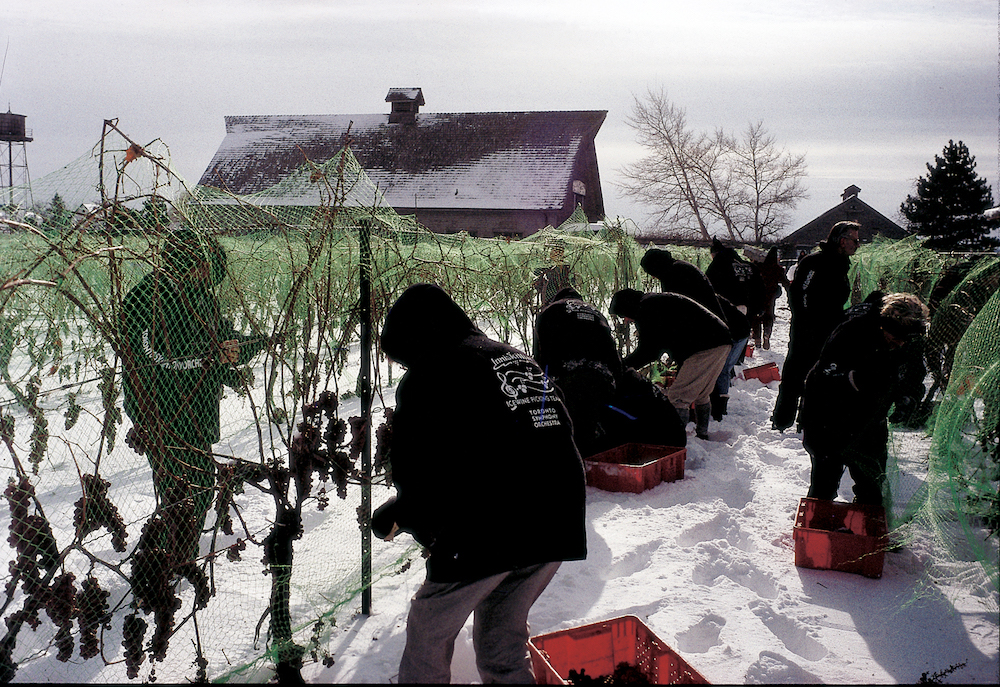
While Niagara vintners were graced with a spectacular, albeit drastically smaller, harvest in 2020, most wineries elected to maximize their table wine output and leave fewer grapes behind for icewine. Already, wineries have a glut of icewine in their cellars due to the pandemic that forced travellers to stay at home and left icewine with a diminishing retail avenue.
The lowest amount of grapes in 20 years was earmarked for the icewine harvest this winter.
Forty-six vineyards registered the equivalent of 1,068 metric tons of grapes, down significantly from last year’s 5,789 tonnes and setting a record low for preregistrations since VQA Ontario began regulating the harvest.
According to a story in the National Post, Arterra Wines Canada Inc., the world’s largest icewine producer and exporter, scaled back significantly after COVID-19 hammered sales.
“What we’re planning to do is probably pick 25 per cent to 30 per cent of what we’d normally pick,” Randy Dufour, vice president of exports, told the paper. “We feel comfortable with our supply of Vidal, but we do need to pick some Cabernet Franc and some Riesling to carry us through to the next vintage.”
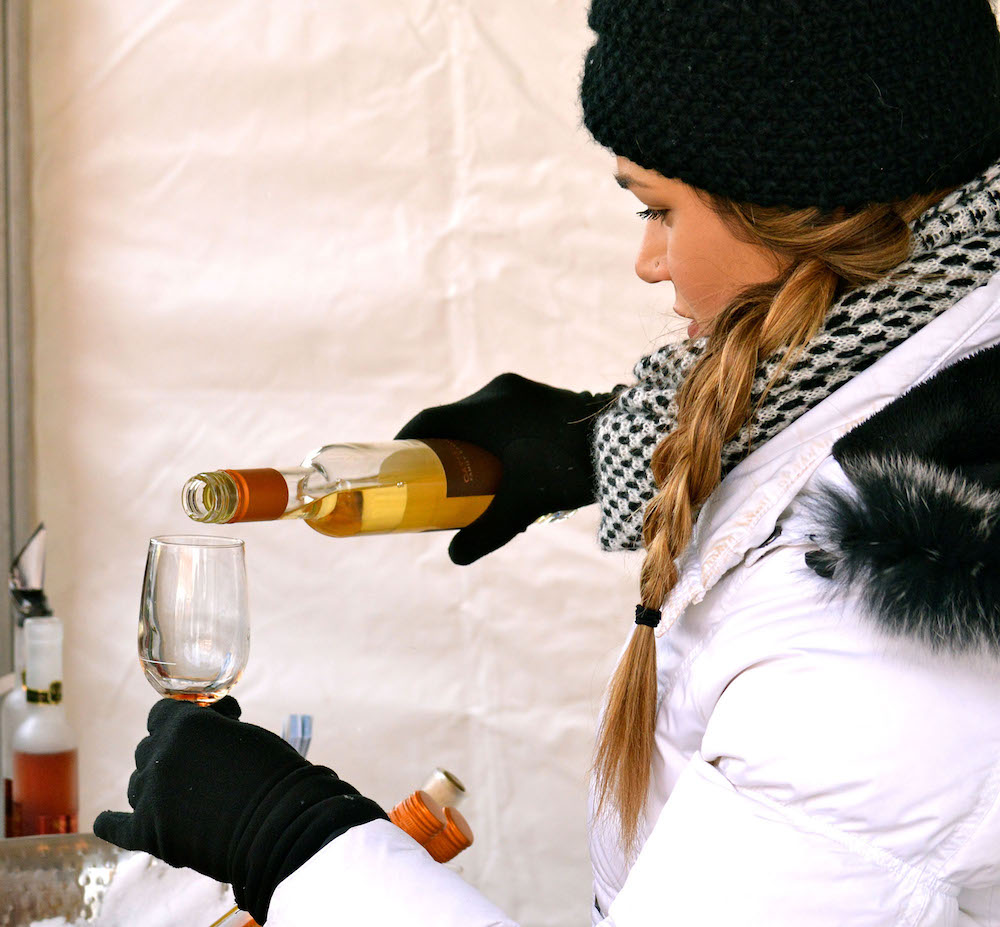
Arterra earmarks about 65 per cent of the icewine it produces at its various wineries for the export market, with annual shipments averaging about 10,000 to 12,000 9-litre cases — equal to as many as 288,000 half-bottles. The company accounts for a significant chunk of icewine exports from Canada, which in 2019 shipped 205,400 litres to 29 countries including the U.S., China, and South Korea, according to the nation’s statistics agency.
Many other producers are skipping the winter harvest altogether. Henry of Pelham, usually among the first to pick icewine grapes in Niagara, for the first time in three decades is skipping the 2020 harvest.
“It’s an unusual year for us,” Paul Speck told the Post. “This is the first year we’re not making icewine.”
Speck, like many of his winemaking peers, blames COVID-19. The pandemic decimated tourism, and the main market for icewines — duty-free shops at airports and border crossings — dried up within three months after last season’s vintage was produced.
“We haven’t sold a lot of icewine since March, so we’re not short of it,” he said. “We just simply don’t need it.”
The rest of the world has always had a bigger thirst for icewine than Canadians — even though it’s grown in our own backyard. It suffers from an identity crisis on home turf and goes largely under-appreciated.
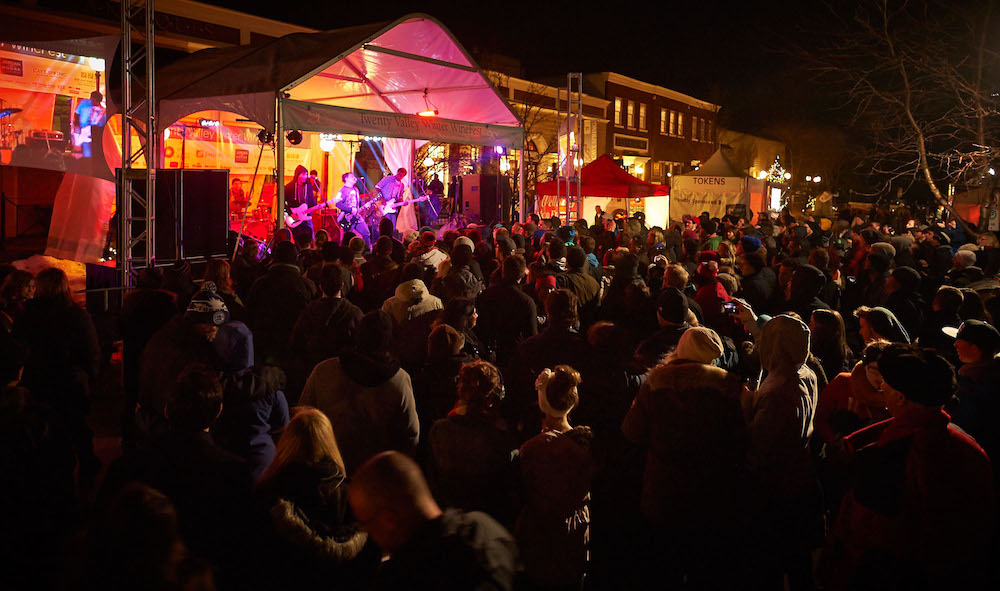
But a lot of the blame for the current situation falls squarely on the shoulders of COVID-19. The annual Niagara winter icewine festival, held over three weekends in January, was cancelled for in-person visits and organizers had to scramble to come up with a virtual celebration for its festivities, which is an extremely difficult proposition for something that needs to be tasted and enjoyed in the environment from where it comes from.
Other scattered campaigns — I did not get the memo — to promote icewines through cocktail recipes showed up on various social media feeds without much cohesion or traction. And if you follow any of the major icewine producers, you can see the panic as icewine and late harvest wines are being sold off at bargain prices at most Niagara wineries.

On the cocktail front, I have enjoyed the odd icewine concoction like the two above from Pillitteri, and they can be delicious. But I just can’t fathom purchasing a $100 bottle of icewine and mixing it with anything — it’s simply too delicious on its own. I understand the need to move some of the unsold icewines out there, so anything to encourage people to drink them is win-win, I suppose.
In my opinion, however, icewine producers just have to get back to the basics of promoting their products for what they are — incredibly unique and luxe elixirs perfect for special occasions and easy to pair with myriad foods.
With so many components to work with, you can either allow icewine to complement the pairing, or be bold and contrast it.
Here are some simple ideas when matching icewine to food:
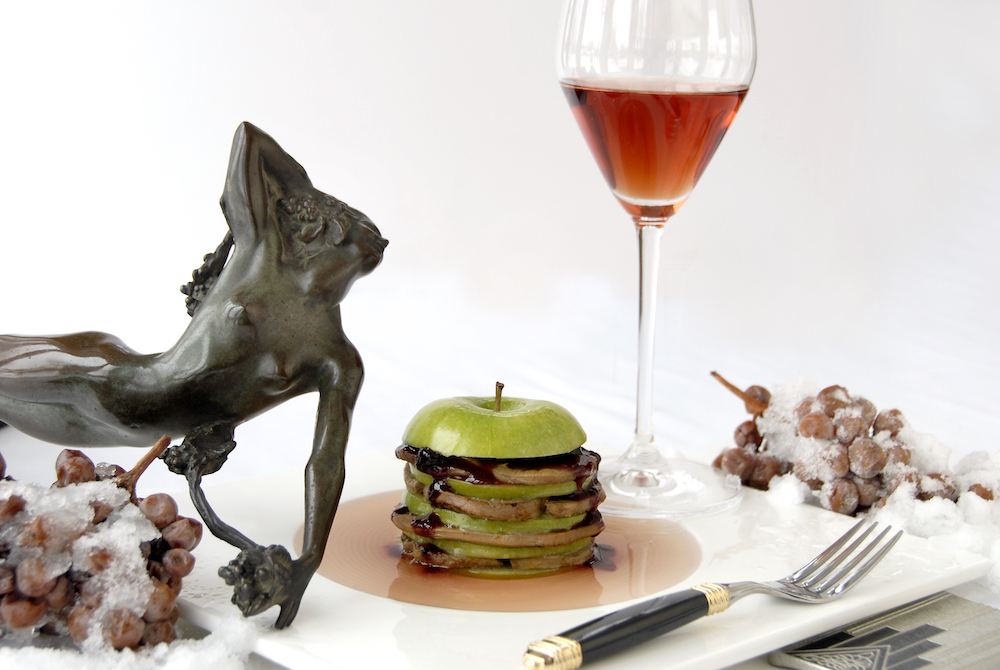
WITH CHEESE: Icewine and cheese is an incredible pairing experience at the beginning or end of the meal. Combine the strength, flavour and rich texture of icewine with cheeses such as blue veined, triple cream, goat cheese, washed rind cheeses, aged cheeses and salty parmesan.
WITH APPETIZERS: Icewine’s bold flavour is wonderful with a wide range of appetizers such as foie gras, fresh shucked oysters and savoury h’orderves.
WITH SALAD: Experiment with your favourite vinaigrette by replacing some of the vinegar with icewine (approximately half) — the natural sweetness tones down any sharp acidity in greens or other ingredients.
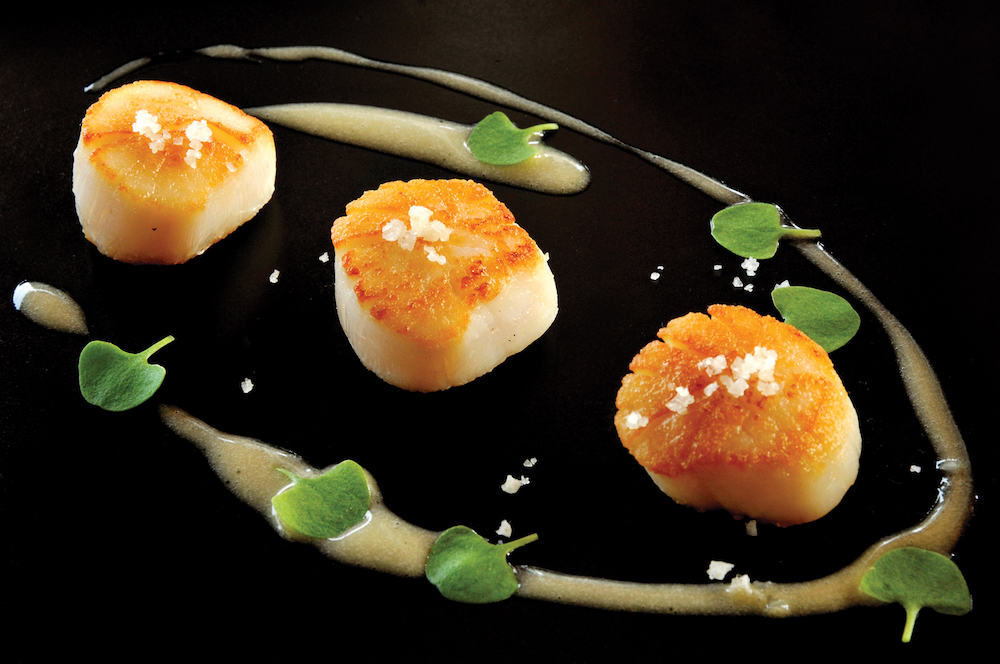
WITH THE MAIN COURSE: Icewine offers unique flavours to glazes, sauces and marinades. Riesling and Vidal icewine are an unforgettable pair with rich seafood like scallops, sushi and Thai food. Sparkling icewine is the most versatile and can pair with almost anything due to freshness and dryness perception caused by the bubbles from beginning to end of a meal and it stands up to the heat in spicy foods.
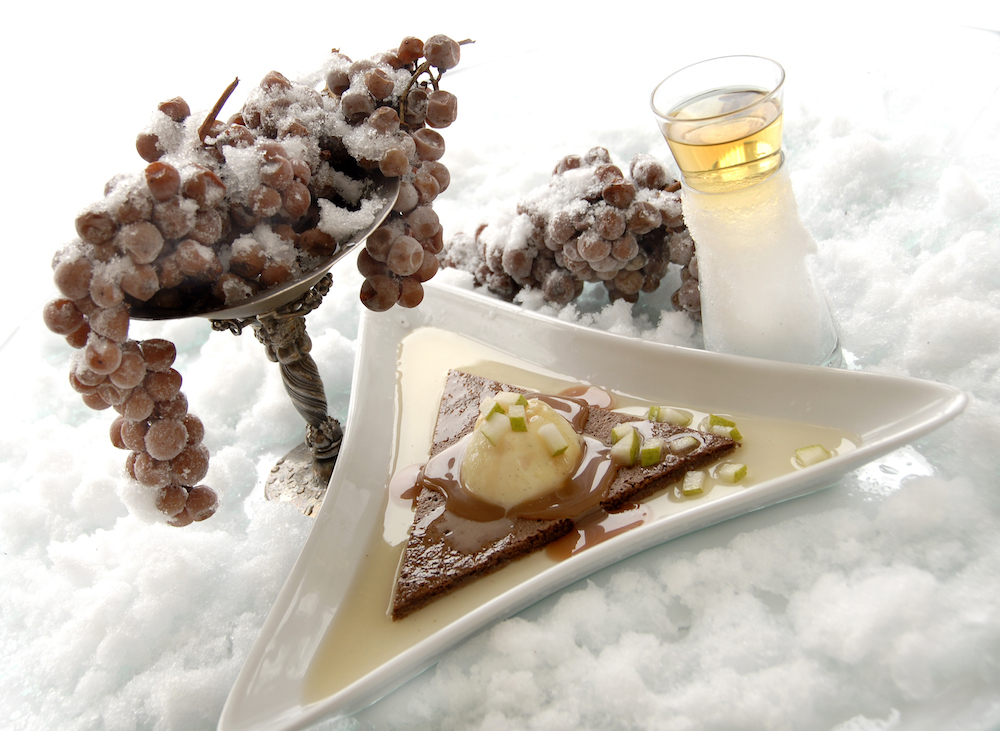
WITH DESSERT: Your dessert should never be sweeter than the icewine. For easy pairings remember white icewine is beautiful with fruit based desserts while red icewine is exquisite with dark chocolate.
If you have the patience for it, try cellaring icewines for 5, 10 or even 20 years. They will simply blow your mind.
I was reminded of this when I opened a pair of Inniskillin icewines this week. One was a 1988 “icewine” (no varietal given, though assume it was Vidal) and the other a 2007 Chardonnay icewine that was aged in oak. Inniskillin is a world leader in the production of icewine. It is sold in over 74 countries and can be found around the world on the wine lists of famous restaurants and hotels, in collectors’ cellars and on many major airlines.
Here are my reviews of the two icewines:
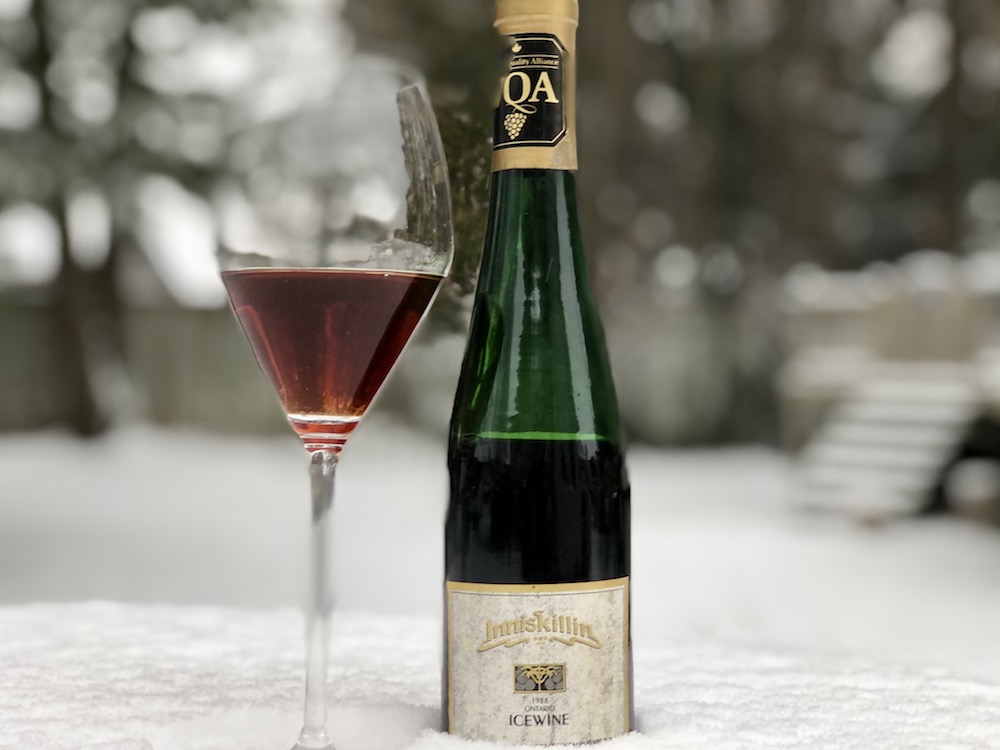
Inniskillin Icewine 1988 — The grape for this Icewine is not specified on the label but we will assume it’s Vidal because the majority of Icewines were made with that grape in the early days. The wine showed alcohol of 12.7% ABV on the label, rather high for icewine. Wow, such a gorgeous mahogany colour in the glass with a beautiful nose of super-ripe tropical fruits, dried apricot, brown sugar, sweet mint, marmalade, quince jam, butterscotch and toffee. It is rich and textured on the palate and still brimming with life. It revealed a range of compoted tropical fruit, candied citrus, apricot preserves, toffee, toasted vanilla and creamy butterscotch with a surprising level of acidity still kicking around. A viscous, generous and luxurious treat that isn’t easily forgotten. It should be noted that the 1989 Vidal Icewine won the coveted Prix d’honneur at Vinexpo in Bordeaux in 1991 and set the stage for Canada’s stature in the world of sweet wines.
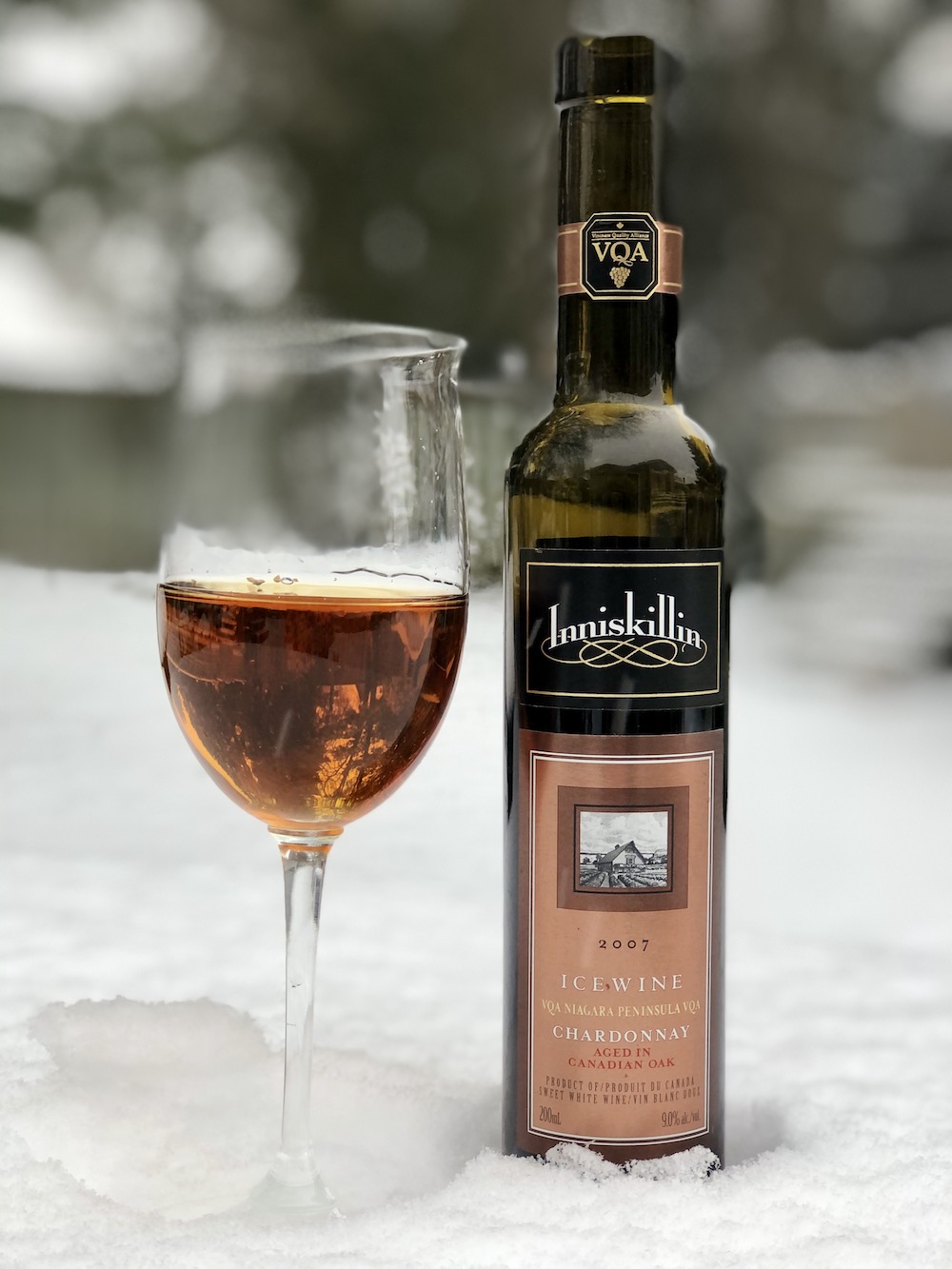
Inniskillin Chardonnay Canadian Oak-aged Icewine 2007 ($45 for 200 mL at the time of release) — This was the first icewine Inniskillin winemaker Bruce Nicholson made when he first joined the winery, adding the oak aging as a new arrow in the quiver of the extensive icewine portfolio at the historic winery. This is something completely different and so evolved from the first time I tasted it when it was released 12 years ago. It has such a hedonistic nose of toasty vanilla spices, poached pear, apricot and peach tart, marmalade and apple pie with cinnamon. It’s wonderfully unctuous and textured on the palate and dripping with compoted orchard fruits, especially peach and nectarine, with apricot, baking spices, toasted vanilla, wild honey and a long, luxurious finish with still enough acidity to see it through the finish line. What a beauty!
New Niagara wine releases
Wines In Niagara continues to taste wines despite the lockdown. It’s not ideal conditions as I can’t be there in person, but it’s important to keep tasting and letting consumers know what’s new out there and what’s coming. Here’s what I’ve tasted lately and can recommend.
A fine Pinot from
Domaine Queylus
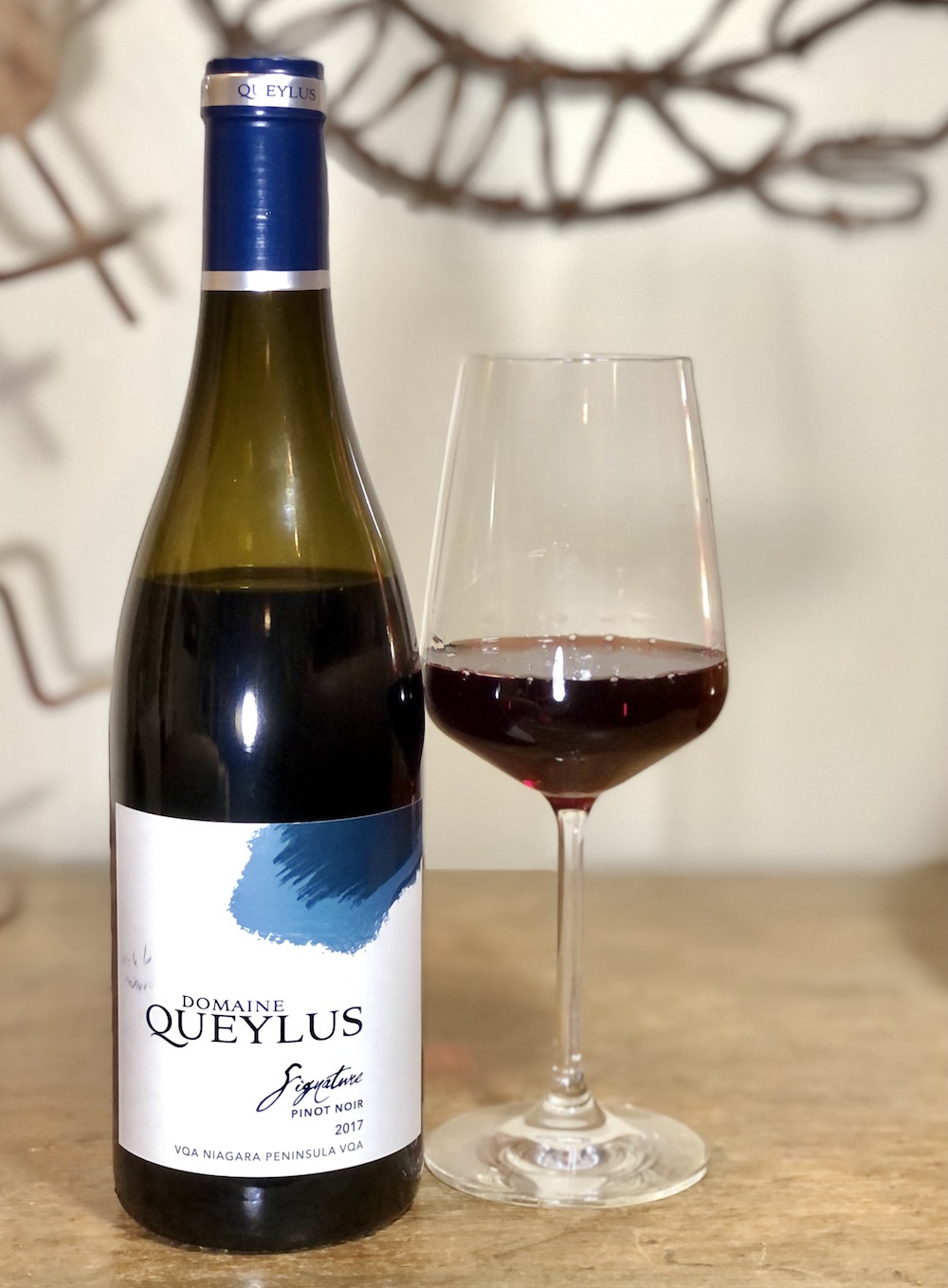
Domaine Queylus Signature Pinot Noir 2017 ($29, March 6 at Vintages, 91 points) — Domaine Queylus has a reputation for making delicious Pinot Noirs over several levels from key estate vineyards in Niagara. This one from the Signature tier has a pretty and perfumed nose of savoury cherries, forest berries, earthy/loamy notes, subtle cassis and crunchy cranberries with light oak spice notes. It’s nicely structured on the palate with silky tannins and depth and displays earthy red berries, cassis, elegant oak spices and a bright, finessed finish. Can cellar 5+ years.
A duo from Kacaba
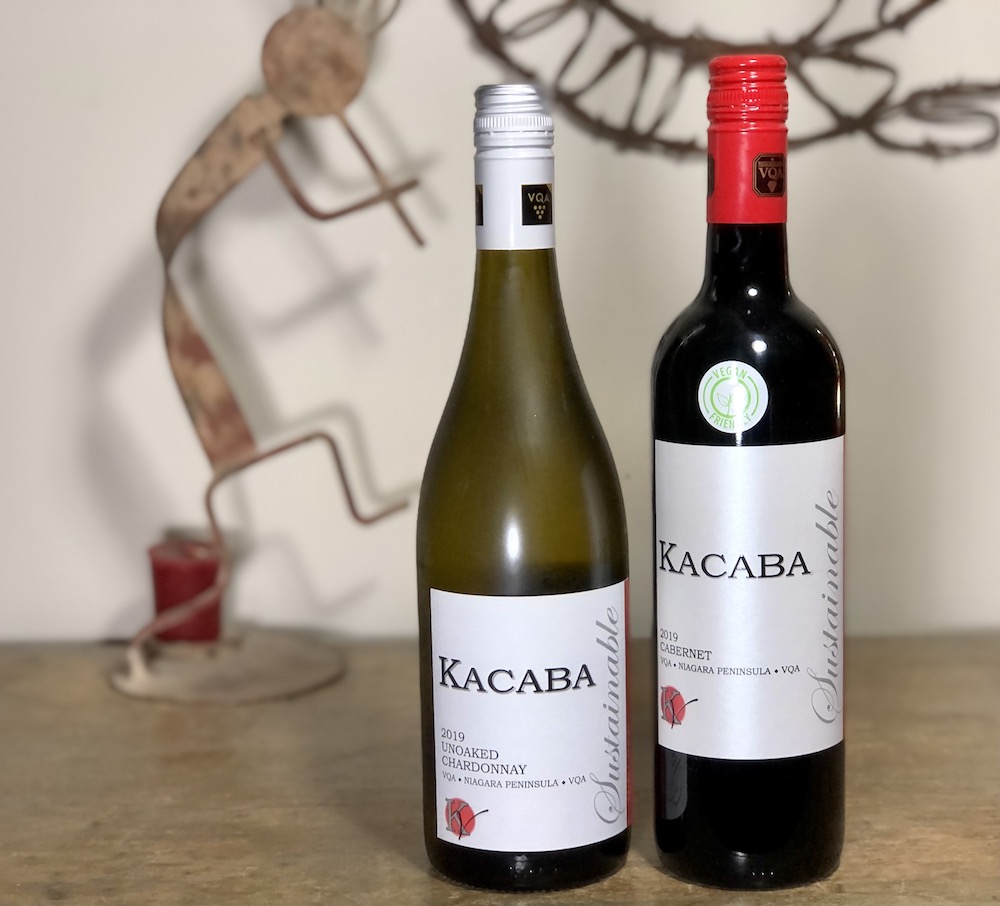
Kacaba Unoaked Chardonnay ($16, LCBO and grocery, 89 points) — A fresh, fragrant nose of peach, pear, apple and subtle tropical fruits. It’s crisp on the palate and loaded with orchard fruits, apricot, nectarine and driven by racy acidity through the bright finish.
Kacaba Cabernet 2019 ($16, LCBO and grocery, 89 points) — A smart buy, this 51% Cabernet Sauvignon and 49% Cabernet Franc over-delivers with a nose of dark cherries, bramble berries, cassis, currants and toasted oak spices. It’s big on flavour on the palate with red berries, anise, cassis, savoury spice notes, cedar cigar box and smooth tannins through the finish.
A pair from Malivoire
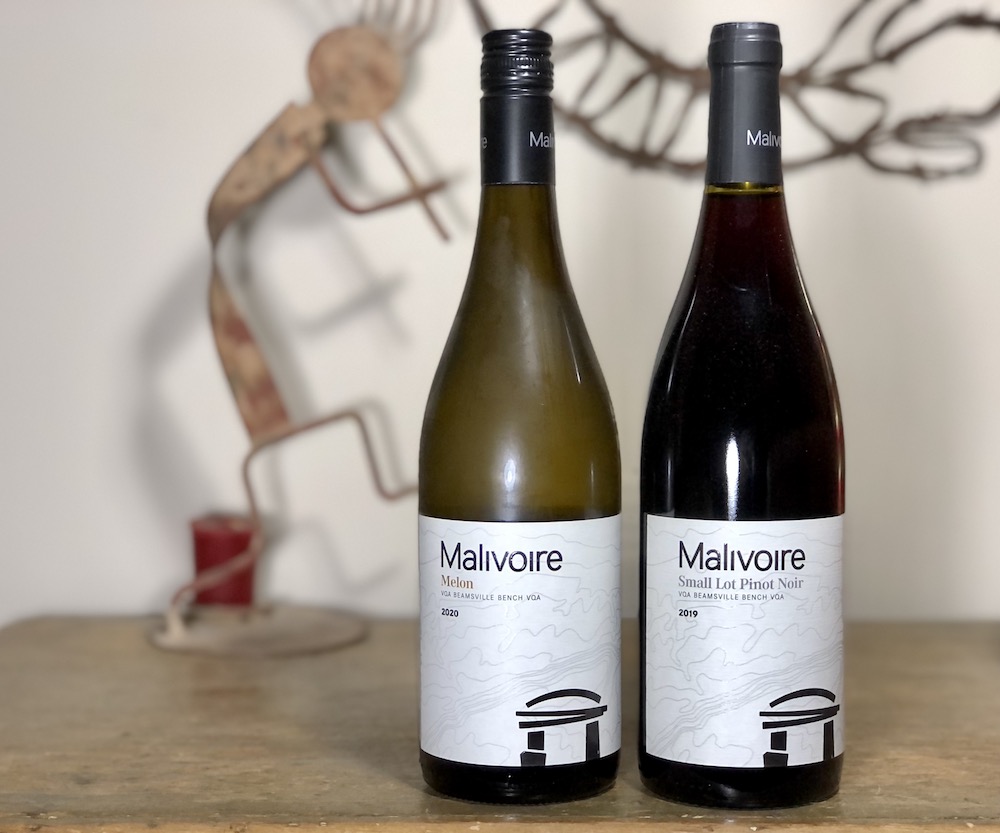
Malivoire Small Lot Pinot Noir 2019 ($30, winery, 93 points) — This Pinot is a blend of the estate Moira Vineyard and winemaker Shiraz Mottiar’s namesake vineyard. The Moira portion was vinified in stainless steel tanks and the Mottiar portion was sent to a concrete tank. The wine spent 10 months in mostly used French oak barrels. It has a highly aromatic nose with perfumed red berries, dark plums, bramble and elegant spice-box notes. It’s so enticing on the palate with crushed red berries, dark and savoury cherries, plums, subtle cassis notes, lovely wood spices, integrated tannins and finesse through the long finish. Call cellar 5+ years.
Malivoire Melon 2020 ($22, winery, 90 points) — This unique (for Niagara) Melon de Bourgogne was whole cluster pressed and aged in stainless steel tank with extended lees contact. It shows zesty lime, fresh peach, perfumed pear and lemon blossoms on the nose. It’s steely and vibrant on the palate and loaded with ripe orchard fruits, zesty citrus and a lingering, fresh finish. Summer in a glass!
Two from Henry of Pelham
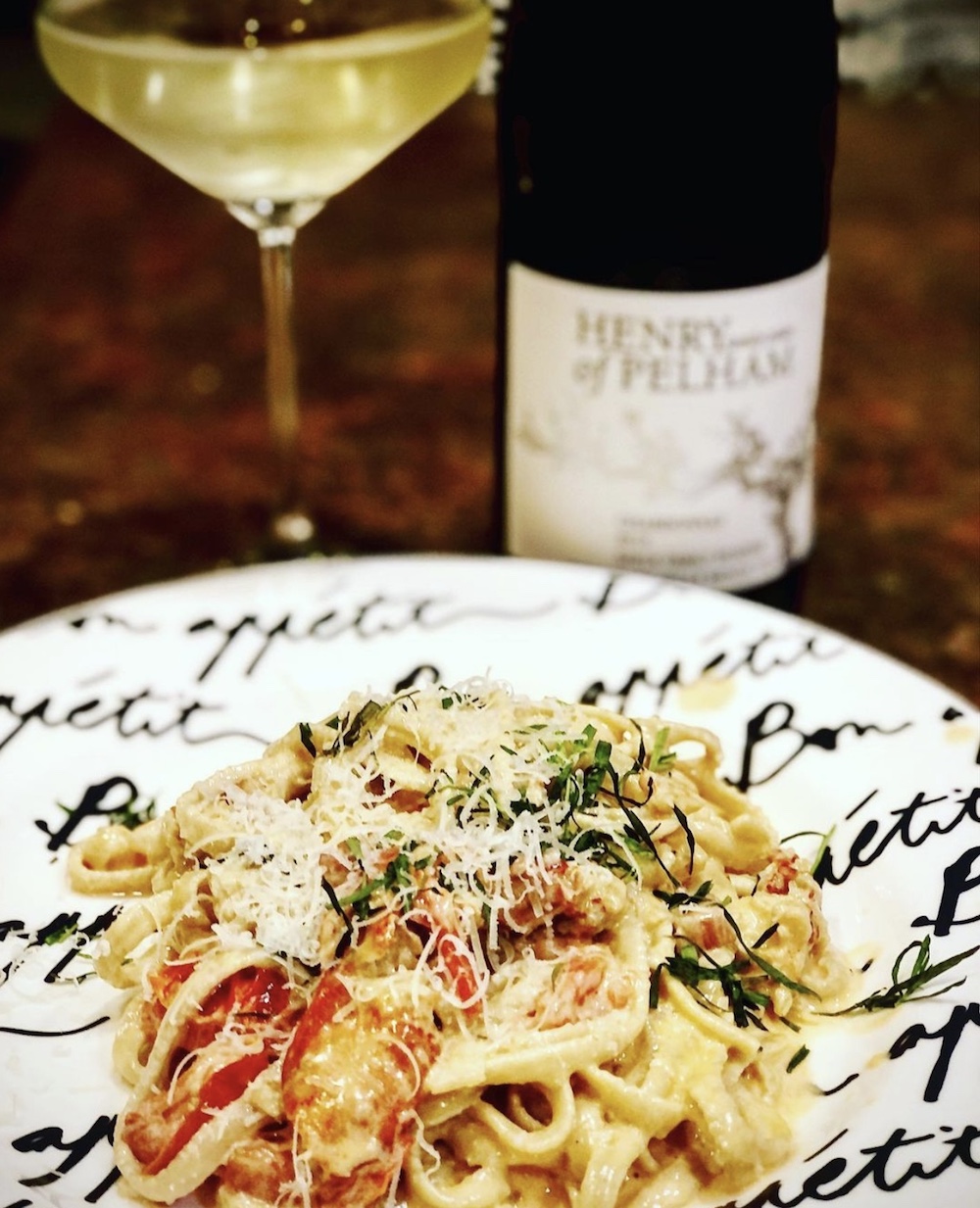
Henry of Pelham Speck Family Reserve Chardonnay 2019 ($30, Vintages May 1, 92 points) — This is the Speck brothers’ top Chardonnay in the portfolio. It’s made from the best Chardonnay blocks at the estate’s Short Hills Bench vineyards and is aged up to 10 months in French oak barrels. The nose starts with a fresh wave of saline minerality then summer pear, golden apple, lemon blossom and elegant oak spices. It is much more rounded on the palate with ripe stone fruits of nectarine, pear, apple and then butterscotch, spice and juicy acidity through a bright, clean finish. Can cellar 5+ years. I paired it with a delicious pasta with a lobster and Chardonnay (this one) cream sauce, pancetta, garlic, shallots and Parmesan (photo above). Ooh la la!

Henry of Pelham Estate Riesling 2019 ($20, Vintages March 20, 90 points) — A classic Riesling, finished with less than 10% ABV, with a nose of green apple, lemon blossom, pear, a mélange of citrus fruit, ginger and wet stones. The palate reveals lovely notes of citrus pith, lemon-lime, green apple, honey, stony minerality and racy acidity that leaves a dry impression on the vibrant, fresh finish. Can age this 7+ years. Please note, photo is of the 2018 vintage.
Niagara wines released at
Vintages stores Feb. 6
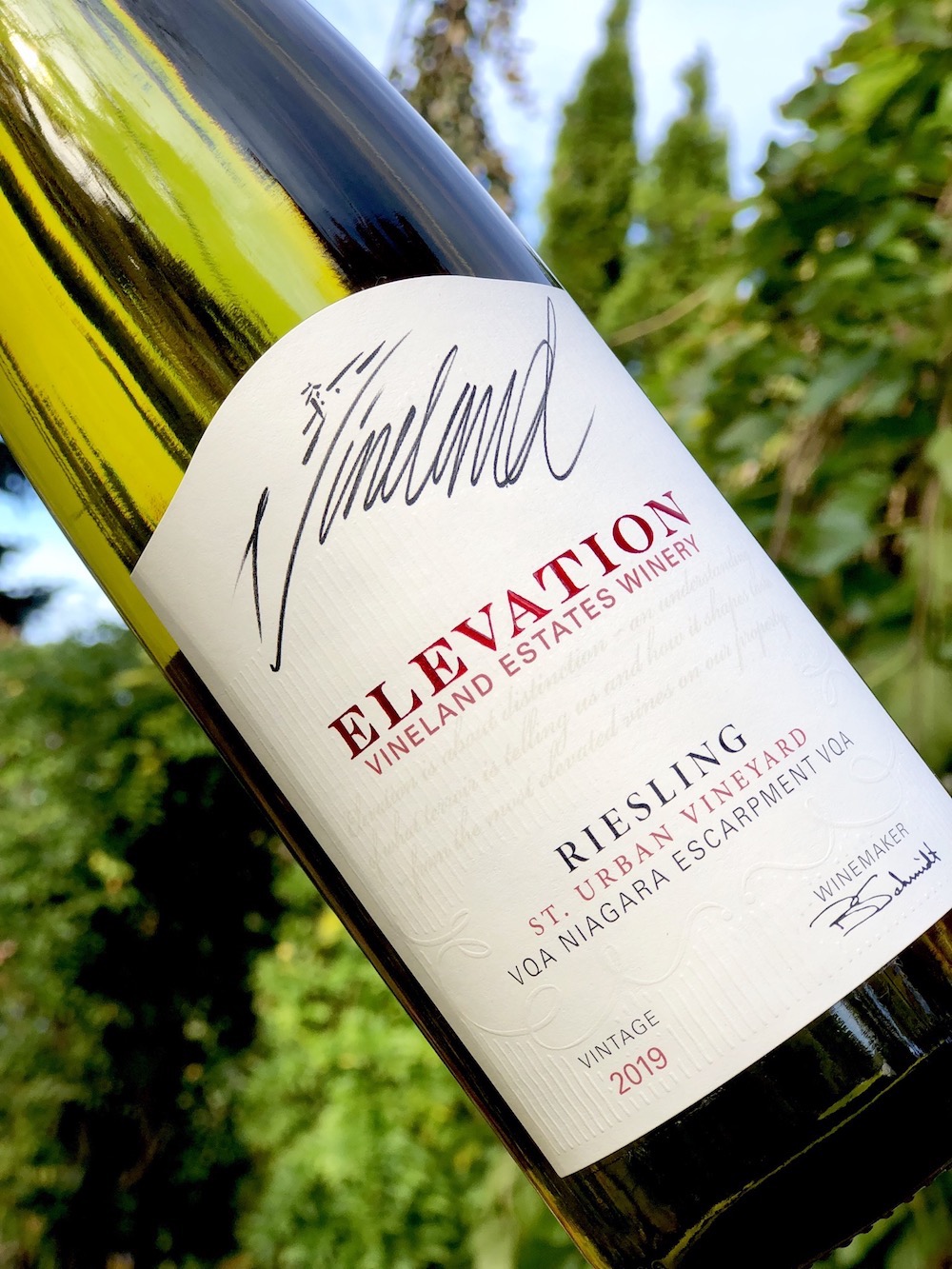
Vineland Estate St. Urband Vineyard Elevation Riesling 2019 ($20, 93 points) — Such a pretty and expressive nose on this single-vineyard Riesling from the historic St. Urban Vineyard planted in 1979. Look for gushing lime, sweet canned pear, profound wet stones and saline minerality, grapefruit and green apple. Certainly off-dry at 45 g/l and light on the palate at 7.5% ABV but offset by a firm acidic backbone that brings a nice tingling tension in the mouth. The citrus, apple, pear and peach fruits have that yin-yang thing of sweet/tartness that build in intensity through the vibrant finish. There is a lovely wild honey note that provides nice texture and flavour on the mid-palate. Cellar 10 or even 15 years and watch this beauty show its true potential. Great value, top-notch Niagara Riesling from the Twenty Mile Bench.

Flat Rock Cellars Good Kharma Chardonnay 2019 ($17, 88 points) — A portion of the sales from this Good Kharma wine goes to Feed Ontario, which provides meals for Ontarians in need. This unoaked style of Chardonnay has pure and fresh aromas of tropical fruits, peach, bright apple, minerals and just a hint of creaminess. It’s clean and fresh on the palate with orchard fruits, peach, pineapple and zippy acidity through the finish.
Other Niagara wines released but not reviewed:
• Cave Spring Cabernet Franc 2018 ($18)
• The Foreign Affair The Embrace 2017 ($17)
A Cali wine to consider

Simi Sonoma County Cabernet Sauvignon 2017 ($27, 90 points) — This Sonoma County blend of mostly Cabernet Sauvignon, and the rest Merlot, Petite Sirah, Malbec and Cabernet Franc spends 14 months in 100% French and American oak barrels (15% new). It has a fruit-laden nose of black currants, cassis, forest berries, dark cherries, mocha and integrated toasty vanilla and spice. It’s generous on the palate with ripe blackberries, anise, licorice, herbs, tightly structured tannins, a range of oak spices and a tangy finish. Pair with grilled steaks with roasted mushrooms, Moroccan spiced lamb, and braised duck breast with carrot purée. Could age to tame those tannins a bit.


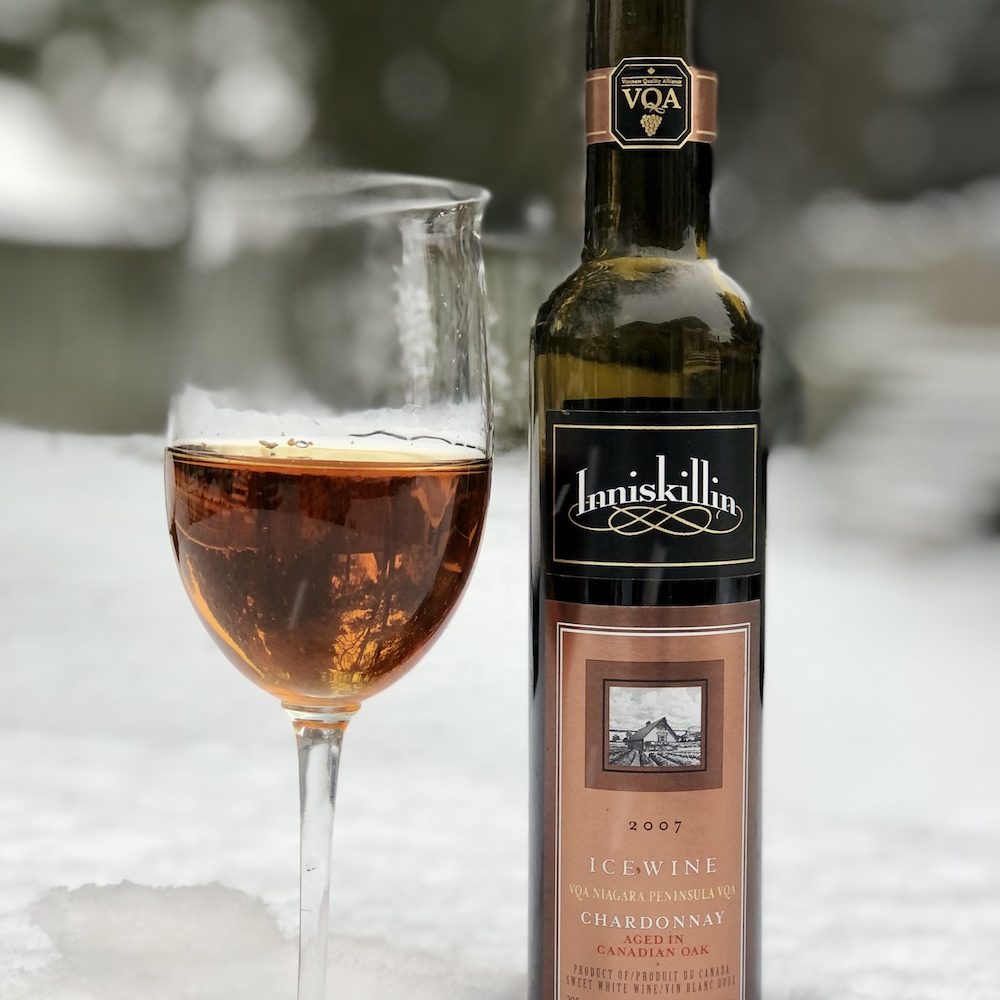




Comment here